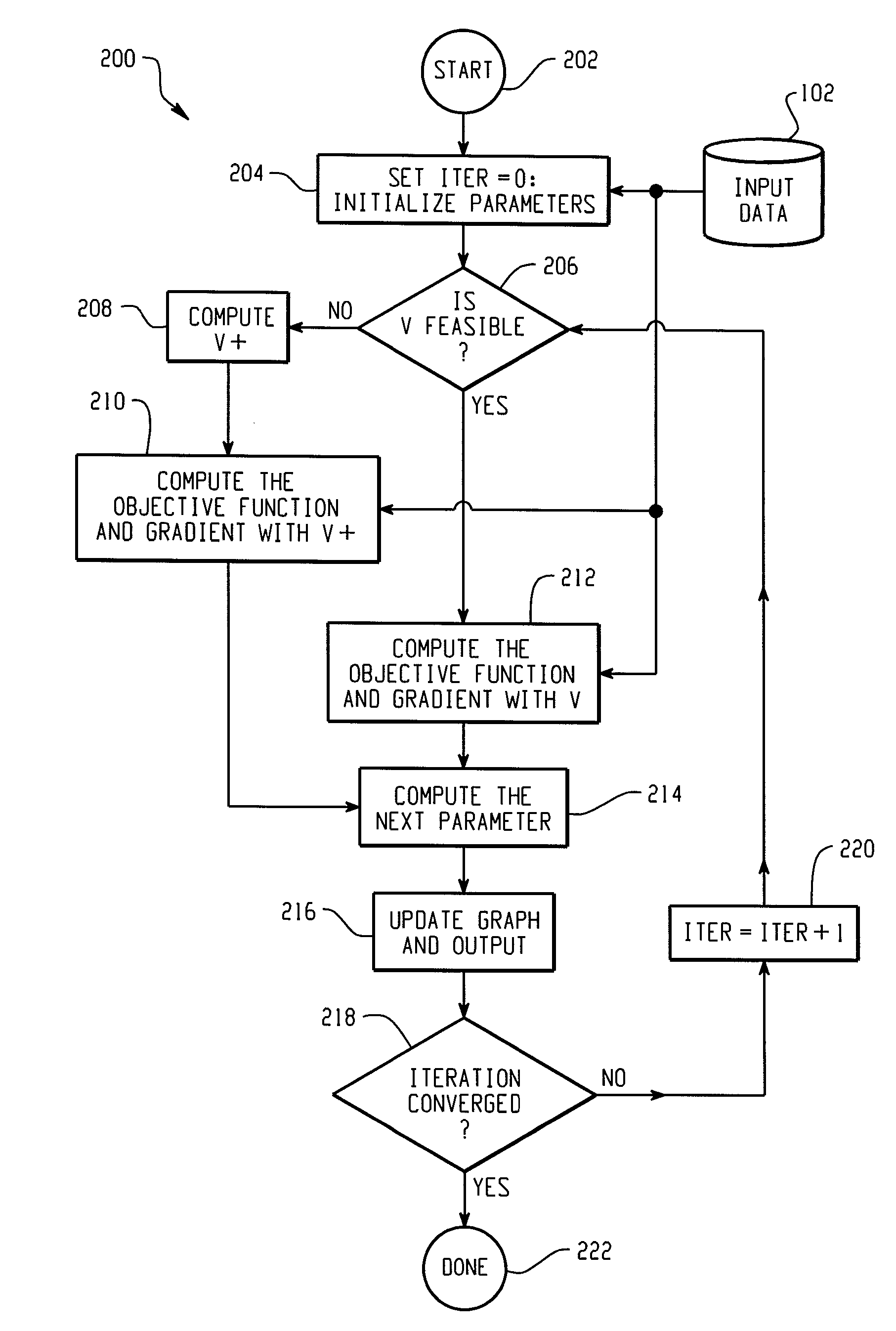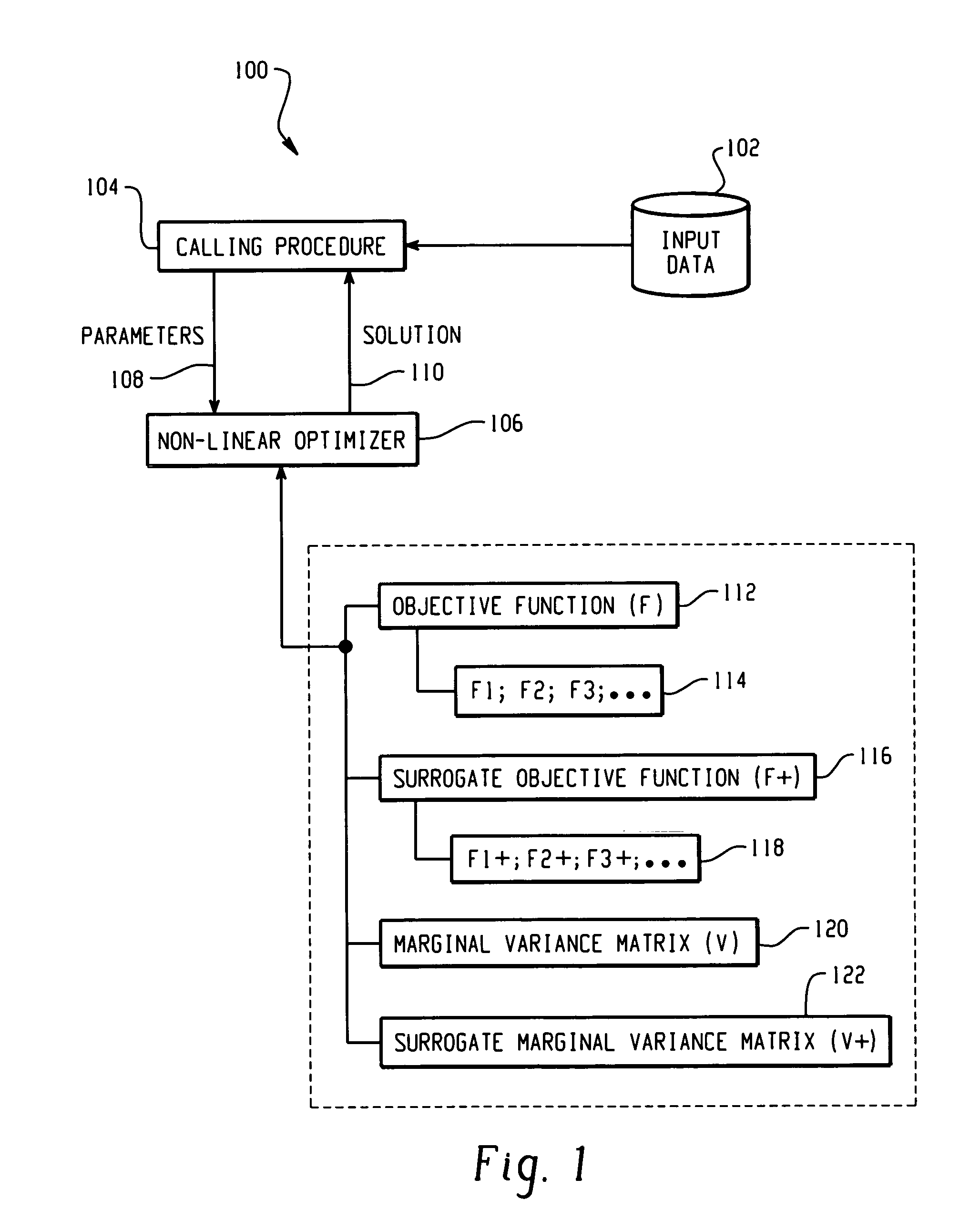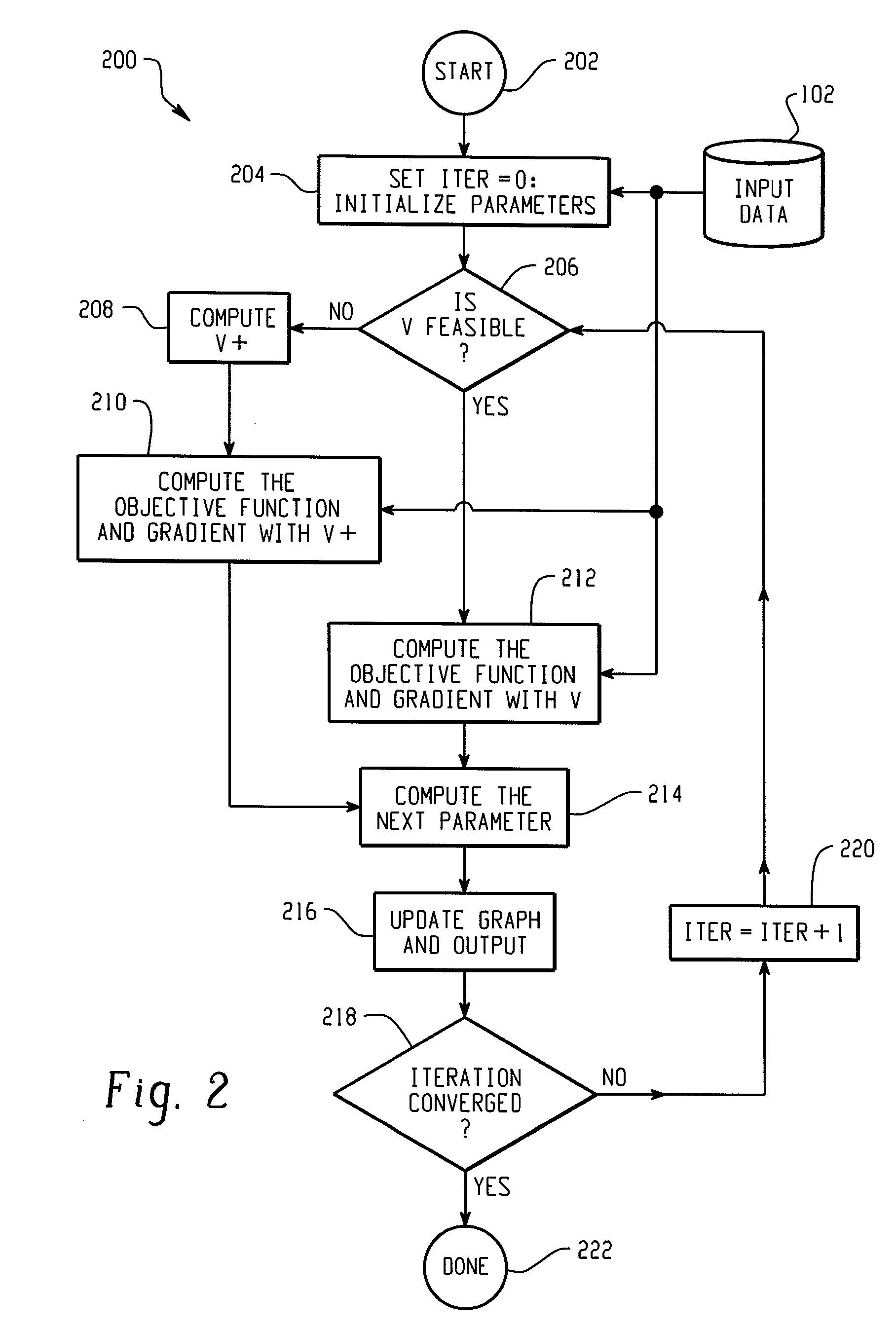System and method for non-linear modeling
a non-linear modeling and system technology, applied in the field of computer-implemented systems, can solve the problems of complex objective functions comprising several non-linear equations that can be much more difficult to solve and/or optimize, non-linear programs or models having a limited-domain objective function can be difficult to solve, and infeasible to solve the model
- Summary
- Abstract
- Description
- Claims
- Application Information
AI Technical Summary
Benefits of technology
Problems solved by technology
Method used
Image
Examples
Embodiment Construction
[0015]FIG. 1 is a block diagram of an example computer-implemented non-linear modeling system 100. The system 100 is typically implemented in a general purpose computer system, such as a mainframe, midrange or even a personal computer, but may also be implemented across a network of computers, within a grid of computers, or in any other suitable implementation that provides sufficient processing power. As described above, such computer systems are characterized by a limited precision in which the computer's processor can not make certain types of calculations. Because of this limited precision, as well as other limitations on the hardware configuration of the processor, such computer systems are prone to crashing, generating an exception fault, or generating incorrect results when attempting to solve a non-linear model having a non-positive definite marginal variance matrix. The system and method described herein, however, modifies the configuration of such a computer processor usin...
PUM
 Login to View More
Login to View More Abstract
Description
Claims
Application Information
 Login to View More
Login to View More - R&D
- Intellectual Property
- Life Sciences
- Materials
- Tech Scout
- Unparalleled Data Quality
- Higher Quality Content
- 60% Fewer Hallucinations
Browse by: Latest US Patents, China's latest patents, Technical Efficacy Thesaurus, Application Domain, Technology Topic, Popular Technical Reports.
© 2025 PatSnap. All rights reserved.Legal|Privacy policy|Modern Slavery Act Transparency Statement|Sitemap|About US| Contact US: help@patsnap.com



